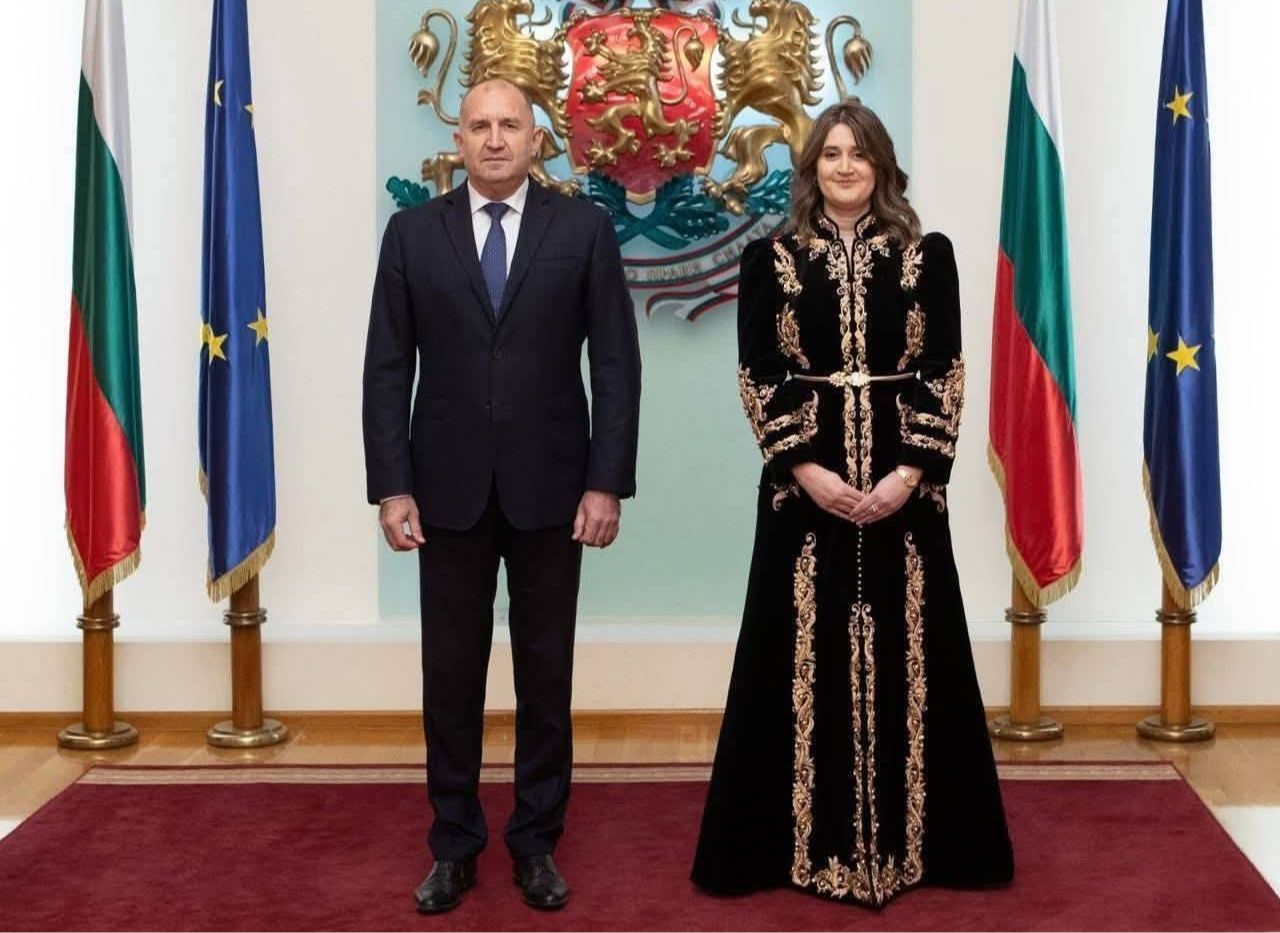Rabat – Asma Babouche, Algeria’s Ambassador to Bulgaria, recently wore the traditional Moroccan caftan while presenting her credentials in Bulgaria, reopening the debate about Algeria’s constant appropriation of Moroccan cultural heritage.
The garment in question is the famed women’s ceremonial caftan associated with Morocco. Yet neighbouring Algeria has repeatedly sought to claim or incorporate this same style into its own heritage narrative.
The caftan is deeply rooted in Moroccan history and identity, far beyond being just a traditional garment. While some distant forms of robe-like clothing existed elsewhere centuries ago, it was in Morocco that the caftan took on its unique form, symbolism, and craftsmanship, later evolving into the iconic dress known today around the world.
Historians trace the Moroccan caftan’s refinement back to the Almoravid and Almohad dynasties, when it became a royal and ceremonial attire worn by noblewomen. Over time, Moroccan artisans perfected the garment by incorporating luxurious fabrics, gold embroidery, fine silk, and the traditional “sfifa” and “aakad” techniques that distinguish it from any other style in the region.
The city of Fez in particular became the beating heart of caftan making, later joined by Rabat, Tetouan, and Marrakech, with each city adding its own touches and motifs. For centuries, the caftan has been worn by Moroccan women at weddings, religious celebrations, and official events. It is a living symbol of elegance, heritage, and national pride.
Moroccan designers like Tamy Tazi, Fadila El Gadi, and Zineb Joundy brought the caftan to international runways, and its identity became even clearer, reaffirming that caftan is Moroccan, by tradition, by craft, and by global recognition.
As a result, the Caftan has become more than a dress. It’s now a cultural symbol, a point of heritage diplomacy, and a matter of national pride.
What Morocco is doing
Morocco has been actively preparing a dossier to inscribe the Moroccan caftan (the “caftan ntaʿa el-Fassi”) as intangible cultural heritage. Meanwhile, Algeria submitted to UNESCO a file on “women’s ceremonial costume in the Eastern region of Algeria: Knowledge and skills associated with the making and adornment of the ‘Gandoura’ and the ‘Melehfa,’” which illegally included images of the Moroccan caftan.
In May 2024 Morocco formally lodged a complaint at UNESCO, accusing Algeria of cultural appropriation of the Moroccan caftan, specifically the caftan nta’a el-Fassi. Morocco was successful in one recent UNESCO meeting in getting the image of the Moroccan caftan removed from the Algerian file.
“For the first time in UNESCO’s history, the Intergovernmental Committee for the Safeguarding of Intangible Cultural Heritage approved Morocco’s objection and decided to remove the image of the Moroccan caftan from the Algerian file, following an official protest by the Moroccan delegation, which was supported by evidence,” Morocco’s Culture Ministry said in a statement in December.
This is not the first time Algeria has made such attempts at cultural appropriation, with the country having been guilty, in recent years, of similar heritage appropriation in other domains – namely the zellige (mosaic tile work) of Fez and the traditional dish couscous.
In each of these appropriation cases, Algeria is submitting applications, using motifs, or otherwise incorporating forms of Moroccan heritage into its own national heritage files without adequate recognition of their Moroccan origin.
Thus this scenario with the caftan is part of a pattern of cultural diplomacy via heritage claims, competing national narratives, and the instrumentalisation of tradition for soft-power.
The Moroccan caftan carries centuries of artisan knowledge, regional creativity, and symbolic meaning. They represent the beauty and craftsmanship, as well as identity, continuity, and pride of Morocco. Recognizing the caftan as uniquely Moroccan is therefore essential for preserving the country’s cultural and economic heritage. It supports local artisans, strengthens traditional industries, and protects the authenticity of Moroccan craftsmanship in a world where imitation is widespread.
When a neighbouring country like Algeria seeks to claim or present the caftan as its own, the gesture goes beyond a simple cultural misunderstanding. It challenges Morocco’s heritage sovereignty and seeks to undermine its cultural diplomacy. This type of appropriation aims to distort history and diminish the international recognition Morocco has earned for its cultural contributions.
Morocco’s response has included preparing its own heritage submission for the caftan, lodging formal complaints when cases arise, mobilizing citizens and petitioning, and emphasizing the historical and craft roots of the Moroccan caftan.
Meanwhile, Algeria evidently continues to promote the caftan within its cultural festivals, framing the garment as “Algerian caftan.”
